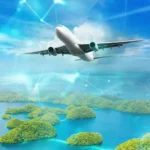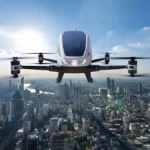TotalControl – A journey into the cloud

Jonny Cooke
Product Manager, TotalControl

The advanced air traffic control (ATC) simulation technology of today is a far cry from that of the early days of ATC, when a “simulator” consisted of wooden aerodromes crafted on top of desktops and aircraft models flying around attached to coat hangers.
As the digital age rolled on in, ATC simulation quickly took advantage, moving in leaps and bounds to the point now where stepping foot in a simulated tower CAB is almost indistinguishable to the real thing.
While the fidelity of our simulations has improved in great strides, how we use our simulators has stagnated for over a decade. The typical simulation experience includes:
- On premises only solutions (or remote capabilities enabled via complex and expensive networking)
- Operational controllers travelling to dedicated training centres for sim training
- Large capital investment project for procurement and commissioning
- Travel-heavy implementation with customers and suppliers spending significant time out of country
- Perpetual software licences with an ongoing maintenance and support agreement (typically 3-5 years)
- Local simulator teams put in place to manage and operate the sim (Pseudo Pilots, maintenance, instructors etc.)
For many ANSPs, this investment makes sense because they train at a scale that justifies it. For others however, there are some real challenges associated with this traditional model:
- They lack the scale or training need to justify such a large investment
- They have a dispersed work force, making the logistics and costs to travel to a fixed location difficult
- The cost to acquire a perpetual software licence when they may only train a few months in a year doesn’t stack up.
The alternative that ANSPs often fall to is outsourcing their training to an external provider, which is also expensive, time-consuming and impactful to operational rosters.

A need to adapt
As we all know, COVID-19 was a massive disruptor to the aviation industry, and ATC training was no exception. The training model that worked for so many years suddenly failed, as aircraft were grounded and staff could no longer travel to an on-premise simulator. This was the reality for us here at Airways and for our customers around the globe.
We decided that the time was right for a step change in simulation, and we began work immediately to change how we delivered sim training. We looked at three main value propositions.
Seamless and secure
- One click software updates
- Secure cloud backups and rollback
- Advanced cloud based systems, monitoring and analytics
Collaborate and sync
- Work on aerodrome updates remotely with your team
- Tweak and test locally, deploy globally
- Keep track of all past changes and data history
Train anywhere
- Setup any PC anywhere to run simulations across the country
- Deploy multi-trainee simulations across the country
- Access new types of sim training and self-study opportunities
The results
Sim-in-a-Suitcase

We are almost two years into our cloud-based journey and have achieved some exciting results with our new modular sim configuration, Sim-in-a-Suitcase. In developing this we had some key criteria in mind:
- It had to be able to be checked in as luggage on a standard flight
- It had to be modular in design, with each case and content identical and able to be used in multiple ways
- It had to be durable
- And most importantly it had to able to be setup in 20 minutes or less, by an ATC
The Sim-in-Suitcase has been a popular configuration due to its affordability and flexibility. It’s the perfect companion to our new cloud capabilities and was a big part of what enabled sim training to continue right through Covid-19 lockdowns for many of our customers.
TotalControl on the cloud
We’re proud to say that TotalControl is now a cloud-based ATC Simulator. When we say cloud we don’t mean using network tricks such as VPNs – we mean a true, integrated solution across our software suite.
What does that mean for our customers? In short, if you have an internet connection and a laptop or PC you can install, sync, run and modify your sim data from anywhere in the world. That includes participating in any running exercise remotely, monitoring your sim’s performance and checking a trainee’s competencies.
It was a long process of not-so-glamourous work, but it’s a milestone that opens the door for something very exciting.
A new model for simulation
One vision for our investment into portable simulation and cloud capability is to make ATC simulation more accessible. What if buying a sim and starting some refresher training didn’t have to be such a large investment, what if your simulator could be flexible enough to fit into whatever training delivery model your organisation needs? What if we thought of simulation as a service?
There are so many pieces of the simulator puzzle that all need to fit to make sure that you’re ready to go and start training. You need hardware, software, airspace data implementation, exercises created, sim pilots, instructors – the list goes on. What if you could pay for what you need when you needed it?
We want to enable customers who have a desire to establish their own simulation capability and seek:
- low barriers to entry
- the flexibility to turn their sim on and off and not incur costs if they aren’t running training
- the ability to choose from a wide range of simulation services based on their current team size and capabilities.
Highly realistic simulation technology is important to our customers as they seek to reduce the time and cost of their training, and they’re looking for more choice in how ATC training is delivered. That’s where TotalControl comes in – and coupled with our other digital training tools such as AKO virtual academy and AirBooks, we’re allowing students to learn anywhere and at any time.





